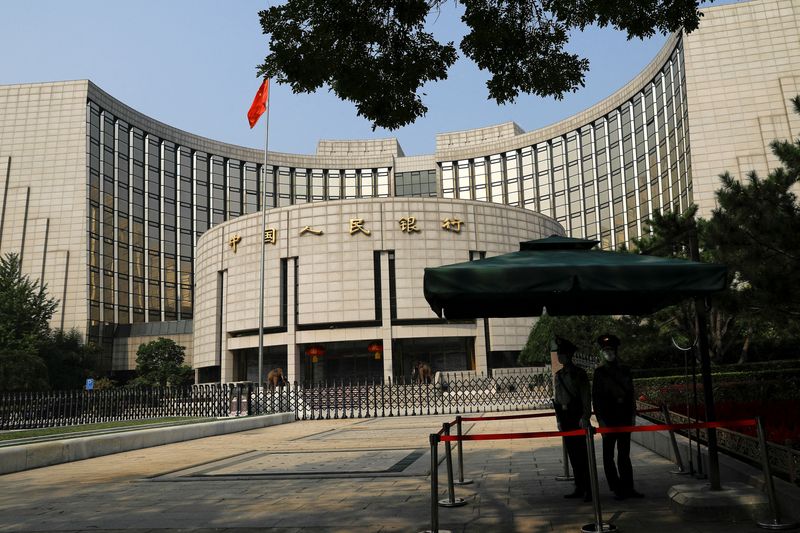BEIJING (Reuters) - New bank loans in China likely rose in December, bringing 2023 lending to a new record high, a Reuters poll showed, as the central bank keeps policy accommodative to support a shaky economic recovery.
Chinese banks are estimated to have issued 1.40 trillion yuan ($195.55 billion) in net new yuan loans last month, up from 1.09 trillion yuan in November though roughly in line with year-ago levels, according to the median estimate in the survey of 25 economists.
If December data, due during the coming week, is in line with forecasts, total new lending in 2023 would hit 22.98 trillion yuan, almost equivalent to the size of the UK economy and up from the previous record of 21.31 trillion yuan in 2022.
Still, the world's second-largest economy has struggled to regain traction, with a disappointing and short-lived post-pandemic bounce. Consumer and business confidence remain weak, local governments are struggling under huge debts, and a deep property crisis is weighing heavily on construction and investment activity.
Analysts expect the People's Bank of China (PBOC) to unveil fresh easing steps early this year to support the economy, amid concerns over deflationary pressures and questions over how long it will take the housing slump to bottom out.
Zou Lan, head of the monetary policy department at the PBOC, said the central bank will use policy tools such as open market operations, medium-term lending facility (MLF), and reserve requirements to support reasonable credit growth, state media reported late on Monday.
Five of China's largest state banks lowered interest rates on some deposits on Dec. 22, which may pave way for the PBOC to cut policy rates, potentially as early as this month.
"China's central bank still has plenty of work to do," said Frederic Neumann, chief Asia economist at HSBC. "After tweaking policy over the past year to support the post-COVID-19 recovery, more steps are need to rev up the Chinese economic engine."
Last week, the central bank made 350 billion yuan in loans to policy banks through its pledged supplementary lending (PSL) facility in December, fuelling expectations of increased support for the ailing housing sector, which traditionally has been a strong growth drover.
The government has in recent months announced a series of measures to shore up the feeble recovery.
In December, Chinese leaders at a key meeting pledged to take mores steps to support the recovery and said this year's growth of total social financing (TSF)– a measure of broad credit - and money supply will match expected goals on economic growth and inflation.
Analysts expect China's economic growth to hit the official target of around 5% in 2023, and Beijing is expected to maintain the same target this year.
Broad M2 money supply growth in December was seen at 10.1%, compared with 10.0% the previous month.
Annual outstanding yuan loans were expected to grow by 10.8% for December, the same as for November.
Any acceleration in government bond issuance could help boost total social financing (TSF), a broad measure of credit and liquidity.
Outstanding TSF was 9.4% higher at the end-November than a year earlier, compared with 9.3% at end-October.
Local governments issued a net 3.86 trillion yuan in special bonds in January-November, the finance ministry data showed.
In December, TSF is expected to fall to 2.20 trillion yuan from 2.45 trillion yuan in November.

($1 = 7.1593 Chinese yuan)
($1 = 7.1592 Chinese yuan renminbi)